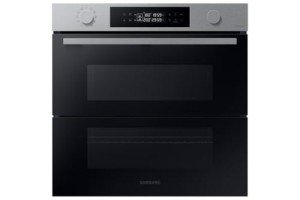The Comprehensive Guide to Built-In Ovens: A Modern Kitchen Essential
Built-in ovens have become a staple in contemporary kitchen areas, integrating visual appeals, functionality, and area efficiency into a single device. As homeowners pursue both functionality and design, comprehending the functions, advantages, and considerations of built-in ovens can significantly boost the cooking experience. This article looks into what built-in ovens are, their varied types, installation factors to consider, and FAQs to assist customers make notified choices.
What is a Built-In Oven?
A built-in oven is a kitchen home appliance developed to be integrated into cabinetry, developing a sleek, cohesive look for the kitchen. Unlike freestanding ovens, which inhabit additional floor area, built-in ovens are enclosed within wall units or kitchen cabinetry. They are available in various configurations and sizes, permitting for tailored services that deal with the requirements of diverse homes.
Types of Built-In Ovens
Built-in ovens can be classified into different types based on their features and cooking approaches. Here are a few of the most typical types:
Single Built-In Ovens
- Best for small cooking areas and homes with modest cooking requirements.
- Generally have one primary cooking compartment, producing a compact footprint.
Double Built-In Ovens
- Ideal for avid cooks and bigger families.
- Functions 2 different cooking compartments for flexible meal preparation.
Wall Ovens
- Set up at eye level for easy access.
- These ovens frequently include convection technology for even cooking outcomes.
Steam Ovens
- Usage steam to cook food, maintaining moisture and nutrients.
- Great for health-conscious individuals.
Mix Ovens
- Combine microwave and conventional oven performances.
- Offer versatility for fast meals and conventional baking.
Italian or European Style Ovens
- Typically developed with unique visual appeals and advanced cooking technologies.
- Popular for high-end kitchen styles.
Benefits of Built-In Ovens
Built-in ovens use a selection of advantages that attract modern house owners looking for both functionality and looks. A few of these advantages consist of:
- Space Efficiency: Built-in ovens conserve important counter area, which is especially beneficial in smaller sized kitchen areas.
- Improved Aesthetics: With a custom look, built-in ovens improve the general style of the kitchen while offering a smooth integration with kitchen cabinetry.
- Flexible Cooking Capacity: Available in various sizes, these ovens accommodate the cooking requirements of various households, from single occupants to large households.
- Accessibility: The setup at eye level makes built-in ovens simpler to access, lowering the risk of spills or injuries when placing or getting rid of hot dishes.
- Lower Energy Consumption: Many built-in ovens featured energy-efficient modes that assist lower electric intake gradually.
Installation Considerations
Setting up a built-in oven requires mindful preparation and factor to consider. Here are some aspects to keep in mind:
- Dimensions: Before buying a built-in oven, determine the space offered to ensure an appropriate fit. Built-in ovens been available in specific standard sizes, so it is crucial to select the right one.
- Ventilation: Adequate ventilation is required for effective operation. Guarantee there is an appropriate exhaust system that complies with local building regulations to prevent getting too hot.
- Electrical Requirements: Built-in ovens may require specific electrical outlets or circuitry. Consult with a qualified electrician to ensure that the installation abides by safety standards.
- Professional Installation: Although some homeowners choose DIY setup, employing a professional can help guarantee safety and proper installation for optimal performance.
Upkeep Tips for Built-In Ovens
Keeping your built-in oven not just extends its lifespan but also guarantees efficient operation. Here are some necessary maintenance pointers:
Regular Cleaning:
- Wipe down interior surface areas after each usage to avoid accumulation.
- Usage vinegar and baking soda for non-toxic cleansing.
Examine Seals:
- Inspect the door seals to avoid heat loss.
- Change worn-out seals immediately.
Test Thermostat:
- Periodically check the temperature precision with an oven thermometer. Change settings as needed.
Service Annually:
- Schedule professional maintenance once a year to check electrical parts and make sure safe operation.
| Maintenance Task | Frequency | Function |
|---|---|---|
| Clean interior | After each use | Avoid accumulation and odors |
| Examine seals | Month-to-month | Ensure no heat gets away |
| Test thermostat | Every 6 months | Check temperature accuracy |
| Professional service | Yearly | Ensure optimum performance |
FAQs About Built-In Ovens
1. Do built-in ovens can be found in different sizes?Yes, built-in ovens are offered in numerous sizes to fit various kitchen configurations and culinary needs. It is necessary to measure the available space before acquiring. 2. Can built-in ovens be used as regular ovens?Absolutely. Built-in ovens work like routine ovens,
permitting you to bake, broil, and cook a range of meals. 3. Are built-in ovens energy-efficient? Many built-in ovens included energy-saving features and are created to utilize less
electrical energy than freestanding designs. 4. For how long does setup take?Installation time can differ based on intricacy but usually varies from 1 to 3 hours. It is advisable to employ a professional for ideal outcomes. 5. What is the lifespan of a built-in oven?With proper maintenance, built-in ovens can last anywhere from 10 to 15 years or longer.
Built-in ovens use a wide range of advantages for modern families, integrating convenience, energy effectiveness, and trendy style into one option.
When selecting and setting up a built-in oven, it's essential to think about the type that best fits your cooking habits, available area, and aesthetic preferences. By comprehending please click the up coming website page , setup requirements, and upkeep needed, property owners can raise their cooking experience and develop spectacular cooking areas that impress both household and guests alike. Investing in a built-in oven can be a beneficial addition that enhances cooking, enhances home value, and savors cooking delights for several years to come.

